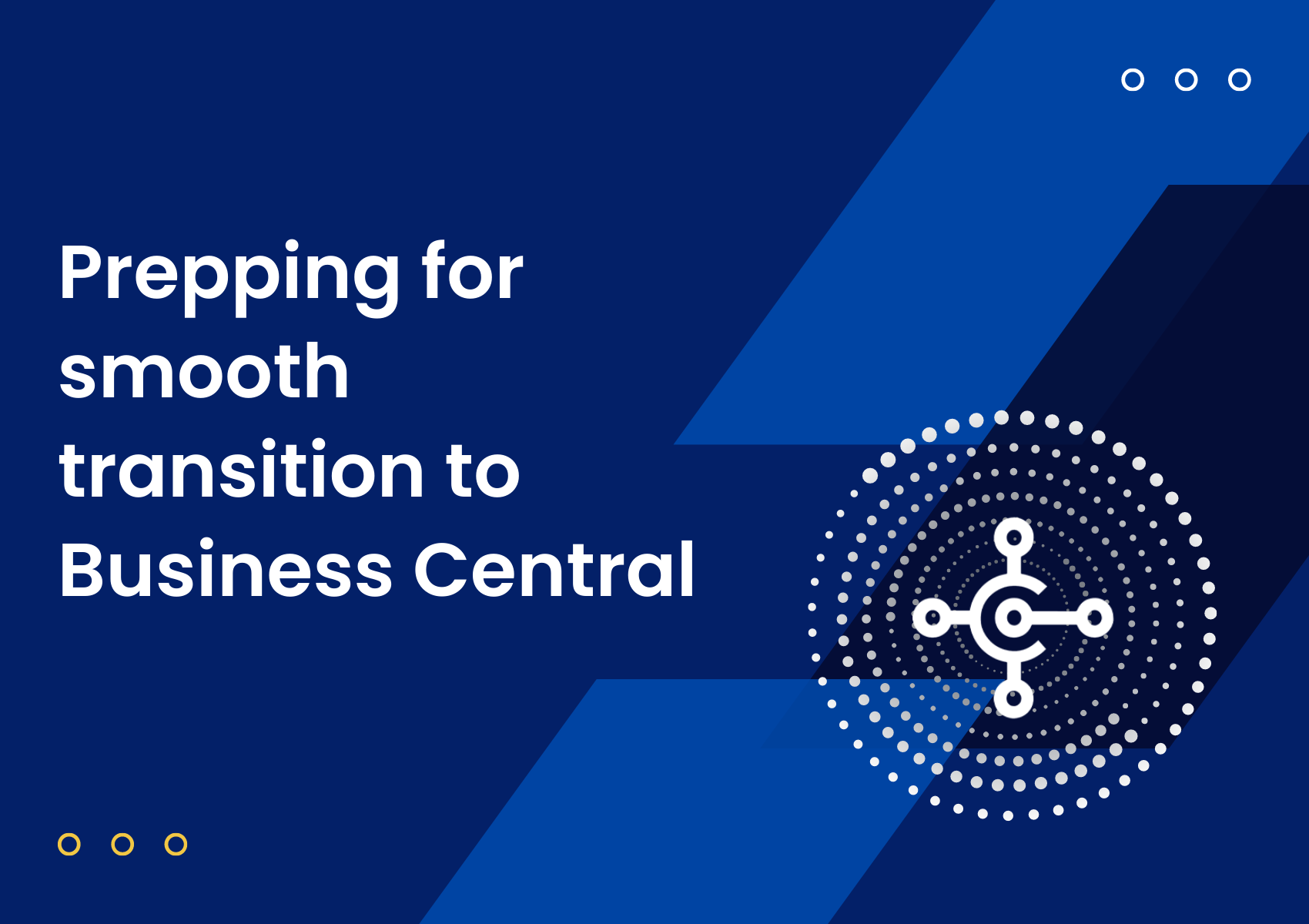Blog
Preparing Your Data for a Smooth Transition: Best Practices for Upgrading to Business Central

In today’s fast-paced business landscape, staying competitive and efficient is crucial. That’s where upgrading to Microsoft Dynamics Business Central comes into play. This powerful software offers a comprehensive suite of tools and features to streamline operations, enhance productivity, and fuel business growth. Upgrading to Business Central can provide you with a centralized platform to manage your finances, sales, inventory, and more, all in one place.
However, the journey to Business Central has its challenges, and one of the key hurdles lies in data preparation. By following best practices and adopting a systematic approach, you can tackle them head-on and pave the way for a smooth transition to Business Central. So, let’s dive in and make the journey to Business Central a breeze!
Assessing your current data
Evaluating data quality and accuracy
To assess data quality, you can check for duplicate entries. Imagine having two identical shirts in your closet – it’s unnecessary and takes up precious space. Similarly, duplicate data can clutter your system and create confusion. By identifying and removing duplicate records, you ensure your data is tidy and accurate.
Identifying data gaps and inconsistencies
Inconsistencies in data occur when different sources or systems store information in different formats or conventions. For instance, imagine comparing sales figures from different branches when one system uses “mm/dd/yyyy” and another uses “dd/mm/yyyy” for dates.
Taking the time to evaluate data quality, accuracy, and identify gaps and inconsistencies sets the stage for a successful transition to Business Central. It ensures the data you migrate is trustworthy, complete, and ready to fuel your new system’s operations.
Data cleansing and normalization
Removing duplicate and outdated records
Duplicate records can be a headache. Like finding two identical socks in your drawer, duplicate data wastes space and creates confusion. Removing these outdated records keeps your data fresh and relevant. It ensures you’re working with the most up-to-date information, just like having the latest concert tickets in your collection.
Standardizing data formats and conventions
Data formats refer to how information is presented, such as dates, phone numbers, or addresses. Data formats vary across systems, creating confusion and leading to errors. By standardizing these formats, you ensure that everyone is speaking the same language.
Conventions, on the other hand, are the rules and guidelines for entering and storing data. Standardizing these conventions ensures consistency and clarity throughout your data. It’s like always agreeing to write customer names in title cases or using consistent abbreviations for states.
Resolving data inconsistencies and errors
Data cleansing and normalization are essential to ensure your data is accurate, consistent, and reliable. By removing duplicates and outdated records, standardizing formats and conventions, and resolving inconsistencies and errors, you create a solid foundation for a successful transition to Business Central.
Data migration strategies
Choosing the right migration approach
When migrating your data to Business Central, choosing the right approach is important, just like finding the best route for a road trip. Different methods are available, such as full data migration or a phased approach. Assess your needs, resources, and timeline for the most suitable strategy. It’s like picking the road to reach your destination efficiently and smoothly.
Extracting data from legacy systems
Now that you’ve decided on the migration approach, it’s time to extract your data from your old legacy systems. Think of it as packing your belongings before moving to a new home. Identify the relevant data sources and export the data from your legacy systems, ensuring you capture all the necessary information. It’s like carefully packing your items into boxes, ensuring nothing is left behind.
Mapping data fields and transformations
Mapping data fields is like creating a translation guide between your old systems and Business Central. You’ll match the fields in your old data to the corresponding Business Central fields, ensuring the information is properly aligned.
During this process, you might need to perform transformations to ensure the data fits the new system’s requirements. It’s like converting measurements from inches to centimeters or translating a document from one language to another. Applying these transformations ensures that the data is compatible and accurately represented in Business Central.
Validating and verifying migrated data
Before settling into your new data home in Business Central, validating and verifying the migrated data is crucial. Think of it as unpacking your belongings and ensuring everything is in its right place.
Validate the data by checking for errors, inconsistencies, or missing information. Ensure the data is complete and accurate, just like ensuring all your items arrive safely during the move.
Data integration and customization
Integrating third-party systems and applications with Business Central requires careful planning. Mapping data between different systems and customizing data fields and configurations to suit your business needs will ensure a seamless flow of information. This step is critical to maintaining data consistency and enabling efficient workflows across your organization.
User training and adoption
User training and adoption play a crucial role in maximizing the benefits of the Business Central upgrade. Educating your users on the new data features and functionalities and providing hands-on training and comprehensive documentation will help them quickly adapt to the new system. Encouraging user feedback and addressing concerns will foster a smooth transition and increase user satisfaction.
Backup and disaster recovery
Establishing a robust data backup strategy and implementing disaster recovery measures are essential to the upgrade process. By safeguarding your data and regularly testing backup and recovery processes, you can minimize the risk of data loss and ensure business continuity in case of unforeseen events.
Post-migration support and optimization
After the migration, ongoing support and optimization are crucial for the long-term success of your Business Central implementation. Monitoring data performance and system stability, promptly addressing any post-migration issues and bugs, and optimizing data processes and workflows will ensure that your organization fully benefits from the upgraded system.
To Sum Up
Upgrading to Microsoft Dynamics Business Central is a strategic move for organizations seeking improved productivity and efficiency. Following the best practices outlined in this blog, you can prepare your data for a smooth transition, minimize disruptions, and maximize the benefits of Business Central’s advanced features.
It’s never too early to start planning and preparing for the upgrade—take the first step toward a successful transition with DynamicsSmartz today!
Categories
- Upgrade
- United States
- United Arab Emirates
- Power BI
- Power Automate
- Partner Program
- Office 365
- Migration
- Industry Updates And Events
- Implementation
- Dynamics SL
- Dynamics NAV
- Dynamics GP
- Dynamics Business Central
- Dynamics 365 for Sales
- Dynamics 365 Field Service
- Dynamics 365
- CRM and ERP
- Construction365
- Australia
- Artificial Intelligence
Recent Posts
- Microsoft Dynamics 365: The Backbone of Australia’s Finance and Supply Chain Excellence
- Copilot AI for Different Industries in D365 (2025 Update): Transforming Future
- Microsoft Dynamics 365 vs Power Apps: A Fresh Comparison for 2025
- Why Sales Processes Matter in Dynamics 365 CRM
- Dynamics 365 Sales vs Customer Service: What are the key differences?








